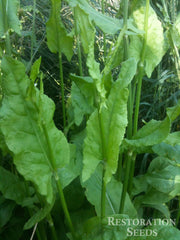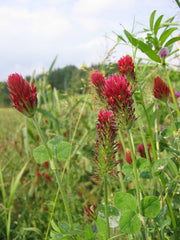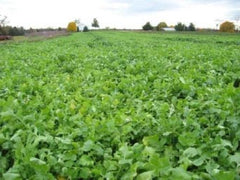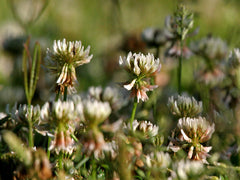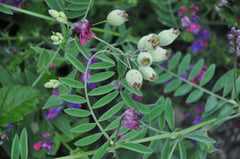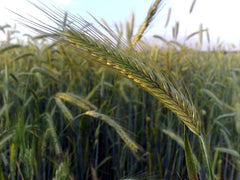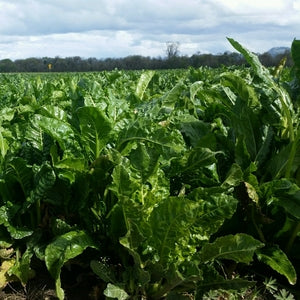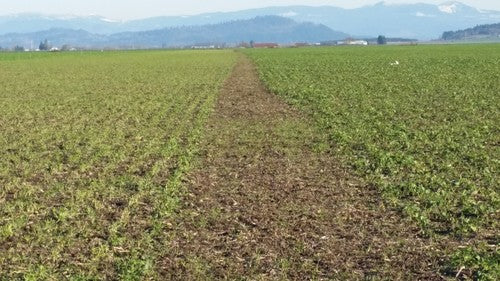Bayou forage kale
Brassica oleracea capitataSOWING
The spring green-up of Bayou is similar to forage rapes. Seed size and crop management of Bayou are similar to other brassica, like turnips etc. Seed should be planted at 6-10 lbs/ac when planted as a single species and 2-3 lbs/ac when mixed with other crops. Bayou should be planted between July and August for the Midwest, or between September and October for the South.
PASTURE/GRAZING
Bayou has excellent regrowth potential when rotationally grazed, and the stems are more palatable than tradition forage rapes for cattle and sheep. They hybrid has been used in food plots for deer as well as upland game birds; when planted beside Dwarf Essex Rape animals will start eating the Bayou first.
Days from maturity calculated from the date of seeding. Average 7,000 seeds per ounce. Average 112M seeds per acre. Federal germination standard: 75%. Usual seed life: 4 years. Isolation distance for seed saving: 1 mile.
Planting Depth 1/4”
Soil Temp. Germ. 55-75˚F
Days to Germ. 5-10
Plant Spacing 12-18”
Row Spacing 8–12”
Days To Maturity 60–70
Full Sun, Moist Well Drained
Bayou Seed Count
1 Pound ≈ 181m seeds
5 Pounds ≈ 907m seeds
25 Pounds ≈ 4,536m seeds
50 Pounds ≈ 9,072m seeds
- 250 Seeds$4.10
- 1 Pound$15.00
- 5 Pounds$40.00
Bayou is a medium maturing forage brassica with good winter hardiness and a smooth leaf with a nutty flavor that is sweet to human taste. This kale has a smaller stem compared to other kale yet grows to a height of eight feet when taken for seed production.
Bayou opens up the soil in trials, similar to rad...
Bayou is a medium maturing forage brassica with good winter hardiness and a smooth leaf with a nutty flavor that is sweet to human taste. This kale has a smaller stem compared to other kale yet grows to a height of eight feet when taken for seed production.
Bayou opens up the soil in trials, similar to radish. When planted in late summer or early fall, Bayou is considerably more winter hardy than radish; this helps protect the soil longer from erosion. Initial observations show that when Bayou was grown for cover it reduced Soybean Sudden Death Syndrome and possibly reduced white mold.
Tags: Type: European, Harvest: Mid, Color: Green, Size: Small, Specialty: Forage Crop, Season: Spring Fall Winter.Originating in Southern and Western coastal Europe, Brassica oleracea has been an important crop since 2000 BC because of its large leaf or head winter food reserves. Without frost, some varieties grow to 8-9’ tall. Members of the oleracea group will cross: kale, collards, Chinese broccoli, cauliflower, cabbage, brussels sprouts, kohlrabi and broccoli. Brassica napus is divided into three subspecies. The Rutabaga, Swedes in England, is ssp. napobrassica or rapifera and are grown for their swollen stems/roots that resemble turnips (B. raps). Siberian Kales and Hanover Salad (B. napus) are ssp. pabularis or pabularia and are grown for their leaves that resemble those of European kales (B. oleracea). Winter rape and canola are ssp. oleifera and are grown for their edible leaves, livestock forage, or for the oil rich seed. For B. napus, see Siberian Kale. Delicious kale recipes.
